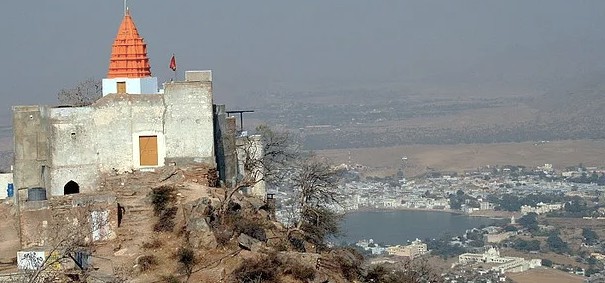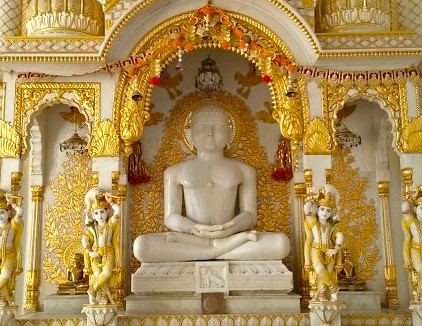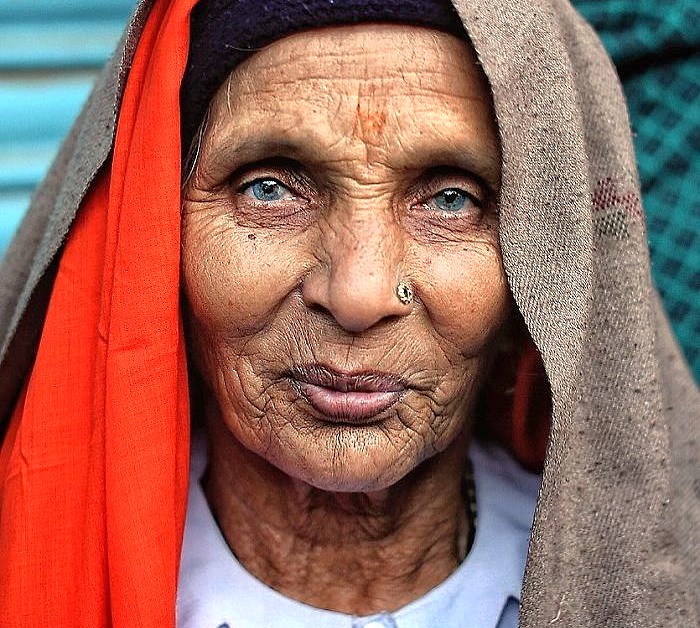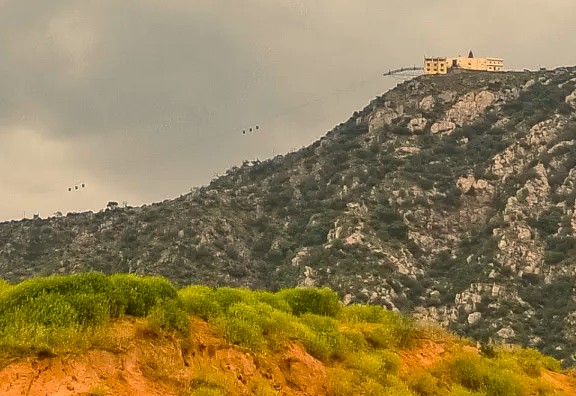Rajasthani Legends
Savitri Temple Ajmer Pushka
Mother Masala Tours
Summit Life
Savitri Temple Ajmer Pushka. High above the plains, the Temple stands as both landmark and sacred retreat, its story woven into the history and culture of Ajmer district in Rajasthan. The name “Savitri” comes from the revered Goddess believed to represent wisdom and perseverance - her temple a focal point for stories, rituals, and dynastic connections. Set in the Aravalli Hills, it holds views across Pushkar and its sacred lake, with a reach that spans centuries of devotion, legend, and community. Over time, that spiritual draw shaped regional politics, encouraged networks of trade, and directed settlement patterns below.

Savitri Temple Ajmer Pushka: Sacred Spaces
Throughout its corridors and courtyards, the Temple holds a collection of items unique to this summit. The main image of Savitri, carved in black stone, is regarded by priests as dating back to the early 18th-century renovations, though oral accounts connect it to earlier centuries. Smaller bronze sculptures, ritual vessels, traditional chhatris, and wind-chimes of brass and copper populate alcoves along the walls. These artifacts have survived through battles, environmental challenges, and social upheavals. The inner sanctum, lined with ancient tiles, is a calm, peaceful space for reflection. Pilgrim pathways are marked by handprints and small altars for offerings.
Ancient Mosaics: Impeccable Craftsmanship

Stonework along the stairway and temple walls is inscribed with names of artisans and patrons dating from the 1700s, including Ranmal Meghwal and Mukta Baisa, whose families specialized in sculpture and ornamentation. Many carvings reference divine stories, as well as scenes of family dynasties offering tribute to Savitri. Detai's reflect deep spiritual connection, bringing history to life. Restorations since 1916 have preserved original elements, from domed roofing tiles to painted lotus motifs within the shrine.
The Pulse of the Local Community
Families living in the foothills and plains below the temple have maintained traditions of hospitality across generations, greeting pilgrims and travelers with water, food, and shelter. Community meals, arranged during festival days, bring all backgrounds together. The area’s population, now around 22,000 for the adjoining town of Pushkar, reflects both settled and semi-nomadic groups whose ancestors have been connected with the temple’s cycles since the first records of the Chauhan Dynasty.
Capturing the Magic: A Photographic Haven

The Temple offers rich inspiration for every photographer. As sunrise warms the hilltop the stairway and sanctum glow with gentle gold and rose tones revealing intricate stonework and tranquil courtyards. With each season the changing light highlights different details from carved pillars to the subtle patterns of marigold petals scattered along the steps. In the evening lamps and firelit rituals create striking contrasts making the temple’s serene atmosphere and spiritual activity perfect for meaningful peaceful photographs. Each visit offers new visual stories. The views are breathtaking. The temple's beauty calms the soul.
A Culinary Journey: Savor the Flavour
Savitri Temple Ajmer Pushka. Food offerings at Savitri Temple center on simple, nourishing vegetarian dishes. The most cherished is a blend of sweet rice - cooked with ghee, saffron, sugar, and local nuts - shared especially during festivals. Lentil stews and flatbreads accompany sabjis made from seasonally available vegetables grown on the slopes. Community meals during gatherings feature puris fried in ghee, served with spiced chickpeas and tangy chutneys. Sweets made with milk and cardamom are a highlight. During Kartik Purnima and Savitri Jayanti, the kitchen can provide for up to 1,500 people per meal, with ingredients prepared by teams of local cooks, blending family and tradition in ways that support both nourishment and ritual.
The Connection with the Gods

The temple is dedicated to Savitri, the first wife of Brahma, whose story is found in ancient Sanskrit texts. Savitri retired to this hill after an argument with Brahma, choosing solitude on the summit to reflect and bless the land. Her peaceful presence radiates over the entire region, offering immense solace to visitors. Her consort's nearby temple at the lake below is linked through ceremonies held jointly at critical points in the Hindu calendar. These rites unify the divine energies of both sites. The story is one of patience, courage, and the power of prayer, inspiring devotees today.
Festivals of Devotion: Honouring the Sacred and the Divine
Savitri Jayanti, celebrated in May or June, is the temple’s most important festival. Devotees gather at dawn to ascend the hill, carrying offerings - coconuts, flowers, cloth, and sweets. Temple priests lead rituals invoking the goddess’s blessings for strength, family unity, and growth. During the full moon of Kartik Purnima - October or November, the summit becomes a place of activity, with ceremonies that link the temple to broader rituals at Brahma’s shrine. Music, recitation, and lamp-lighting form part of the event, and the community welcomes those from surrounding villages to participate in established, timeless patterns of worship and celebration.
Serendipitous Meetings: Beyond the Main Path

Exploring the hillside and lanes leading to the temple reveals a vibrant tapestry of local life and craft. We notice stalls selling handspun cloth, incense, and devotional beads, each item a testament to local artistry. Here skilled artisans carefully craft small idols and beautifully painted stones, perfect for pilgrims to carry home as cherished mementos. These dedicated individuals preserve ancient traditions with immense pride. Farmers grazing their cattle on the low slopes greet us warmly, sharing captivating stories of earlier generations. They explain the enduring traditions that have guided their lives through cycles of drought, monsoon, and times of plenty. Their wisdom offers a genuine connection to the land.
Ancient Technologies: Sacred Sound, Geometry & Astrological Influences
Savitri Temple Ajmer Pushka. The temple’s placement, following classic Vastu Shastra principles, places it to align the morning sun with its central sanctum precisely during solstices and festival periods. The structure itself, built of local marble and breccia, amplifies chant and bell sounds during rituals. Bells used during ceremonies are cast to specific Solefeggio frequencies - such as 528 Hz and 396 Hz - believed to foster peace and clarity, considered part of the solfeggio scale. Intricate geometric patterns decorate both floor and ceiling, their symmetrical designs focusing attention and energy during worship. Rainwater channels are cut into steps, ensuring natural flow towards pots used for cleansing and cooking, and reflecting an understanding of the hill’s physical and spiritual dimensions working together.
Resilience and Renewal: Overcoming Adversity’s Challenges

In 1787, a lightning strike damaged part of the upper dome. Local Chauhan Dynastic leaders, supported by Pushkar’s priestly guilds, led repairs, introducing marble reinforcements and protective copper work. This collective effort ensured its survival and beauty. During the famine of 1899, community grain stores were brought to the summit to feed families and wandering ascetics. This act of compassion showcased their enduring spirit. Earthquakes over the last century have required careful maintenance. Continuous dedication from the community safeguards its integrity.
Urban Legends: Strange Sightings, Myths and Mysteries
Stories among hill residents mention a spectral figure in white, believed to be Savitri herself, seen during full moon nights at the temple’s highest step. Some say bells ring by themselves during especially strong monsoon winds. Accounts from British officers in the 19th century describe orbs of light moving down the path at sunrise, later explained as fireflies, yet still treated as curious omens.
India: Beyond What Words Can Capture, Join Us

An unforgettable journey in Pushkar, Rajasthan, with a unique camel ride across the vast sands leading towards the sacred Savitri Temple. This serene adventure immediately connects you to the timeless landscape. As we approach the summit, the horizon expands, the sanctuary beckons, and time slows, offering us space to reflect and share a peaceful meal among the ancient edifice's stone and silence. The tranquility here is profound, fostering inner peace. Throughout our journey, guides - drawn from local priestly families - share captivating accounts of lineages, lost rituals, and the enduring spirit that binds generations.
Symphony of Generosity: Offerings from Wanderers to Residents
Savitri Temple Ajmer Pushka. Contributions from pilgrims fund repairs, education, and ceremony expenses for those less able to pay. Relationships between families - priestly, artisan, and agricultural -form a network that supports both spiritual and material well-being. Food from temple kitchens is shared with orphans, widows, and the swamped, turning worship into wider community support. Across each season, these mutual exchanges shape not just the temple’s function but the rhythm and energy of the region. We leave with content hearts and a staisfied travel palate.